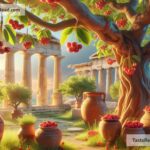The Fascinating Story of Corn in Native American Culture
Corn, also known as maize, is much more than just a tasty food. It is a symbol of survival, culture, and spirituality for Native American communities. For thousands of years, corn has played an important role in their history, traditions, and way of life. This humble crop has a fascinating story rooted in resilience, innovation, and connection to the land.
Corn’s Ancient Beginnings
Corn didn’t always look like the large ears we see in grocery stores today. Its origins trace back over 9,000 years in the region that is now Mexico. Scientists believe Native Americans transformed a wild grass called teosinte into the corn we know today. This was no small feat; it took generations of careful breeding and planting to create a crop that was nutritious, easy to grow, and versatile.
Corn spread from Mexico to other parts of North and South America over thousands of years. Native Americans shared seeds, knowledge, and farming techniques, helping corn become a staple food across the continent. By the time Europeans arrived in the Americas, corn was widespread, and each Native community had their own unique ways of growing, cooking, and honoring it.
The “Three Sisters”
Many Native American tribes knew that corn grew best alongside two other crops—beans and squash. Together, these three crops are called the “Three Sisters.” Corn provides a tall stalk for beans to climb, while squash grows along the ground to keep moisture in the soil and prevent weeds. Beans also add nutrients like nitrogen to the soil, which helps all three plants thrive.
This method of planting was not only smart but also sustainable, showing Native Americans’ deep understanding of ecology and farming. The Three Sisters provided a balanced diet rich in protein, carbohydrates, and vitamins, helping communities stay healthy and strong.
Corn as a Spiritual Symbol
To Native Americans, corn wasn’t just food; it was sacred. Many tribes believed that corn was a gift from the Creator or the Earth itself. Corn ceremonies, dances, and prayers were held to thank nature for this life-sustaining crop and to ensure good harvests in the future.
For example, the Hopi people of the Southwest believed corn was essential to their survival and their connection to the spiritual world. Corn pollen was used in religious ceremonies as a symbol of life and renewal. Similarly, the Iroquois people had a Green Corn Festival during the harvest season to celebrate and give thanks for the corn.
Corn is often woven into Native American legends and creation stories. Some tribes tell tales of a mythical Corn Mother or Corn Maiden who gave her life to provide food for her people. These stories highlight corn’s central role in Native culture, not just as a physical sustenance but also as a symbol of generosity, community, and the cycle of life.
Sharing Knowledge with the World
When Europeans arrived in the Americas, they had never seen corn before. Native Americans taught them how to grow and prepare this new crop, saving many settlers from starvation. Without Native American knowledge, it’s likely the early colonies in North America would have failed.
Corn quickly became popular in Europe and eventually spread around the world. Today, it is one of the most widely grown crops globally. However, its expansion came at a cost: many Native Americans were displaced from their lands, and the deep cultural connections they had to corn were often overlooked or erased.
Corn Today in Native Communities
Even today, corn remains a vital part of Native American life. Many communities grow heirloom varieties of corn passed down through generations. These special types of corn often come in beautiful colors like blue, red, yellow, and even black. Blue corn, for example, is important to many tribes and is used to make dishes like blue corn mush or tortillas.
Corn continues to be used in ceremonies and festivals, honoring the crop’s cultural and spiritual significance. In recent years, efforts to revitalize traditional farming methods and preserve indigenous seeds have grown. These efforts help reconnect Native communities with their ancestors and maintain their agricultural heritage.
Lessons from Corn
The story of corn in Native American culture teaches us many valuable lessons. It reminds us of the importance of sustainability and working in harmony with the earth. It shows us the incredible ingenuity of Native farmers who turned a wild grass into one of the most important crops in human history. And it reveals the deep spiritual connection Native people have to the land and all living things.
Today, as we enjoy corn on the cob, popcorn, tortillas, or cornmeal, we should take a moment to recognize its rich history and the people who made it possible. Corn is more than just a food—it’s a testament to the resilience, creativity, and wisdom of Native American cultures. By appreciating the story of corn, we honor the legacy of those who have nurtured it for thousands of years and continue to do so today.


